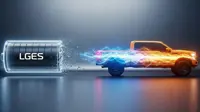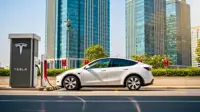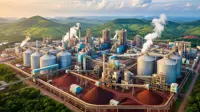Simultaneous energy, fertiliser production conserves water
19 Apr 2012
Water is a valuable resource. New technologies are making it easier to handle drinking water responsibly, purify wastewater effectively and even recover biogas and fertilizer.
 Clean drinking water and basic sanitation are human rights. Yet almost 780 million of the world's population still have no access to drinking water and some 2.6 billion people live without sanitary facilities. Water, though, is also an important economic factor:
Clean drinking water and basic sanitation are human rights. Yet almost 780 million of the world's population still have no access to drinking water and some 2.6 billion people live without sanitary facilities. Water, though, is also an important economic factor:
Today, agricultural and manufacturing businesses already use up more than four fifths of this precious commodity. And the demand for water continues to rise. The Organization for Economic Cooperation and Development (OECD) expects that by 2050, global water consumption will have risen by more than half. Some 40 per cent of the world's population will then be living in regions with extreme water shortages - 2.3 billion people more than today.
We have, to date, been wasteful in our use of this valuable resource. In Germany, each and every individual consumes around 120 litres of water per day - they drink only three. Another third is flushed down the toilet. But in some regions of the world, clean water is much too precious to be wasted transporting excrement. New technologies are allowing us to significantly reduce drinking water consumption, purify wastewater effectively and even recover biogas and fertilizer.
The researchers at the Fraunhofer Institute for Interfacial Engineering and Biotechnology IGB and System and Innovation Research ISI have developed the solutions as part of the DEUS "Decentral Urban Water Infrastructure Systems'' project.
Not all water has to be drinking quality - for watering the garden or flushing the toilet, for instance. Using rainwater and treated wash water for personal needs pays off, especially in arid regions. Fraunhofer researchers have developed a modern water treatment plant for this very purpose. It produces germ-free, usable water that satisfies the requirements of the German Drinking Water Regulation (TVO).
"The treated rainwater can be used for showering, washing, flushing the toilet and watering the garden'', explains Dr. Dieter Bryniok from the IGB in Stuttgart.
Vacuum sewage is a key building block. The concept drastically reduces water consumption. Vacuum toilets need only about 0.5 to 1 litre of water per flush. By comparison: Conventional toilets use between four and eight litres.
What's more, the investment and maintenance costs are lower than those for conventional sewage systems. Domestic wastewater is biologically purified in an anaerobic, high-performance membrane plant. The heart of the system, fully-mixed anaerobic bioreactors, treat the wastewater without aeration or oxygen and the organic constituents are converted into biogas, a mixture of methane and carbon dioxide.
The bioreactors are combined with rotation disk filters. The wastewater is forced through ceramic filter disks. The rotational movement of the ceramic membranes inhibits the formation of covering layers.
So the filtration capacity is maintained over a prolonged period. The purified water drains into the filter plant's hollow shaft. The pores in the membrane range in size from 60 nanometres and 0.2 micrometres. All larger particles are routed into the bioreactors. Bacteria are also returned to the reactors, which breakdown the organic waste that has been filtered out. The recovered biogas provides power and heat. The entire plant works in the absence of air. The benefit: there's no bad odor.
Another special feature of the disposal concept: As well as domestic wastewater, the wastewater purification plant can also process bio kitchen waste. Kitchens are simply equipped with a waste macerator, accommodated below the sink.
The system is connected to the domestic wastewater pipes. As more and more organic waste gets into the wastewater, the biogas yield increases. Bio-waste and wastewater produce another by-product: fertilizer. Nitrogen and phosphorous are converted into ammonium and phosphorous salts and can be recovered through the applied membrane technology.
As Bryniok explains, "The water management concept DEUS 21 benefits mainly those regions that still have no water infrastructure with sewage system and central clarification plant, or in which the old infrastructure can no longer be modified to meet the new challenges posed by climate change or de-population. The system is also ideally suited for export to water-scarce areas, because it can be adapted specifically to the needs of dry and semi-arid regions.''






.webp)















